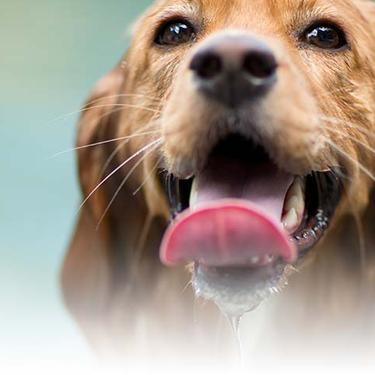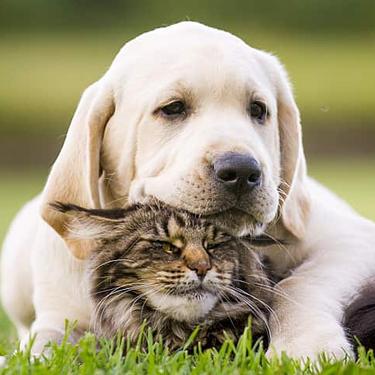
-
Find the right food for your petTake this quiz to see which food may be the best for your furry friend.Find the right food for your petTake this quiz to see which food may be the best for your furry friend.Featured products
 Puppy Large Breed Chicken & Brown Rice Recipe
Puppy Large Breed Chicken & Brown Rice RecipeVital nutrients to support 5 essential building blocks for lifelong health
Shop Now Hill's Science Diet Adult 7+ Senior Vitality Small & Mini Chicken & Rice Recipe Dog Food
Hill's Science Diet Adult 7+ Senior Vitality Small & Mini Chicken & Rice Recipe Dog FoodImproves everyday ability to get up & go
Shop Now Puppy Lamb Meal & Brown Rice Recipe
Puppy Lamb Meal & Brown Rice RecipeVital nutrients to support 5 essential building blocks for lifelong health
Shop NowFeatured products Adult Sensitive Stomach & Skin Cat Food
Adult Sensitive Stomach & Skin Cat FoodHighly digestible food that is gentle on the stomach. Nourishes skin & promotes lustrous fur.
Shop Now Adult Indoor Chicken Recipe Cat Food
Adult Indoor Chicken Recipe Cat FoodSupports energy level and beautiful fur in indoor cats
Shop Now Adult 7+ Chicken Recipe Cat Food
Adult 7+ Chicken Recipe Cat FoodSupports energy level and beautiful fur in mature cats
Shop Now -
Dog
- Dog Tips & Articles
-
Health Category
- Weight
- Food & Environmental Sensitivities
- Urinary
- Digestive
- Joint
- Kidney
-
Life Stage
- Puppy Nutrition
- Adult Nutrition
Cat- Cat Tips & Articles
-
Health Category
- Weight
- Skin & Food Sensitivities
- Urinary
- Digestive
- Kidney
-
Life Stage
- Adult Nutrition
Featured articles Water
WaterDiscover why water is the most important nutrient for your dog or cat to live a healthy life. Find out how much water your pet should consume each day.
Read More The Incredible Science Behind Your Pet's Microbiome
The Incredible Science Behind Your Pet's MicrobiomeLearn what a pet's microbiome is, how it contributes to your pet's gut & overall health, and why nutrition is important in maintaining healthy microbiomes.
Read More Pet Food Storage Tips
Pet Food Storage TipsDiscover how and where to store your dry, as well as canned, dog and cat food. Learn how to find the "best before" dates on all Hill's pet food packaging.
Read More -


Crate training is necessary for safety, damage prevention, housetraining and travelling. When you can't keep your puppy with you, he should be confined to a safe area, such as a dog crate. The crate should be big enough for your puppy to comfortably stand up and turn around when he reaches adult size.

A good way to introduce your puppy to the crate is by playing a game that teaches him to go into the crate on command. At mealtime, grab a handful of his favorite Hill's puppy food and take your puppy to the crate area. With a bit of encouragement, toss a kibble into the crate. As your puppy runs in after the food, say "Go to your crate." Once your puppy has eaten the prize, he will run out to play again.
Repeat the exercise 15 to 20 more times per session. Gradually move farther from the crate before you toss the food. Eventually, you should be able to say "Go to your crate" as you sweep your hand toward the empty crate and your puppy will enter on command.
If possible, keep the crate in an area where the family spends a lot of time so your puppy has the opportunity to occasionally enter on his own. You can encourage exploration and time in the crate by placing Hill's® puppy treats or toys in the crate for your puppy to find.


Tasty Tips
You must be careful not to overdo crate confinement. Your puppy can be kept in his crate all night for sleeping and up to four hours during the day, but if you are away from home for a longer period, you will need to provide more room until your puppy can control his bowels or bladder.
For longer confinement periods, you can use a small, puppy-proofed room or an exercise pen with papers spread on the floor during the day, and then use the crate at night when your puppy sleeps. A crate is just too small an area to keep your puppy in all day and all night, too. If you are frequently gone all day, having a friend, family member or dog walker come to let your puppy outside to use the bathroom during the day can be very helpful.
If your puppy cries or barks while confined, try to ignore him. Releasing your puppy or giving him any type of attention will reinforce the behavior.
You need to make your puppy stop barking before you let him out of the confinement area. You can try blowing on a whistle or making an unusual noise. This will cause your puppy to be quiet as he tries to decipher the sound. You can then quickly go into the room and release your puppy while he is quiet.
Most importantly, the confinement area should be a safe haven for your puppy, so never scold or handle your puppy roughly as you put him inside.


One of our staff authors prepared this article for you
Related products

Vital nutrients to support 5 essential building blocks for lifelong health

Improves Everyday Ability to Get Up & Go

Improves everyday ability to get up & go

Vital nutrients to support 5 essential building blocks for lifelong health
Related articles

Learn basic steps & precautions for treating a cut on your dog, including what you can put on the cut, and when you should take them to the vet.

Learn how to stop your dog from begging at the dinner table, and understand how it can help contribute to his health.

Understand the role that Omega-6 and Omega-3 fatty acids play in your dog's overall health, and how you can ensure they are getting enough.

Discover fun and engaging games and other ways to help your dog exercise, keeping him happy and healthy.

Put your dog on a diet without them knowing
Our low calorie formula helps you control your dog's weight. It's packed with high-quality protein for building lean muscles, and made with purposeful ingredients for a flavorful, nutritious meal. Clinically proven antioxidants, Vitamin C+E, help promote a healthy immune system.
Put your dog on a diet without them knowing
Our low calorie formula helps you control your dog's weight. It's packed with high-quality protein for building lean muscles, and made with purposeful ingredients for a flavorful, nutritious meal. Clinically proven antioxidants, Vitamin C+E, help promote a healthy immune system.

